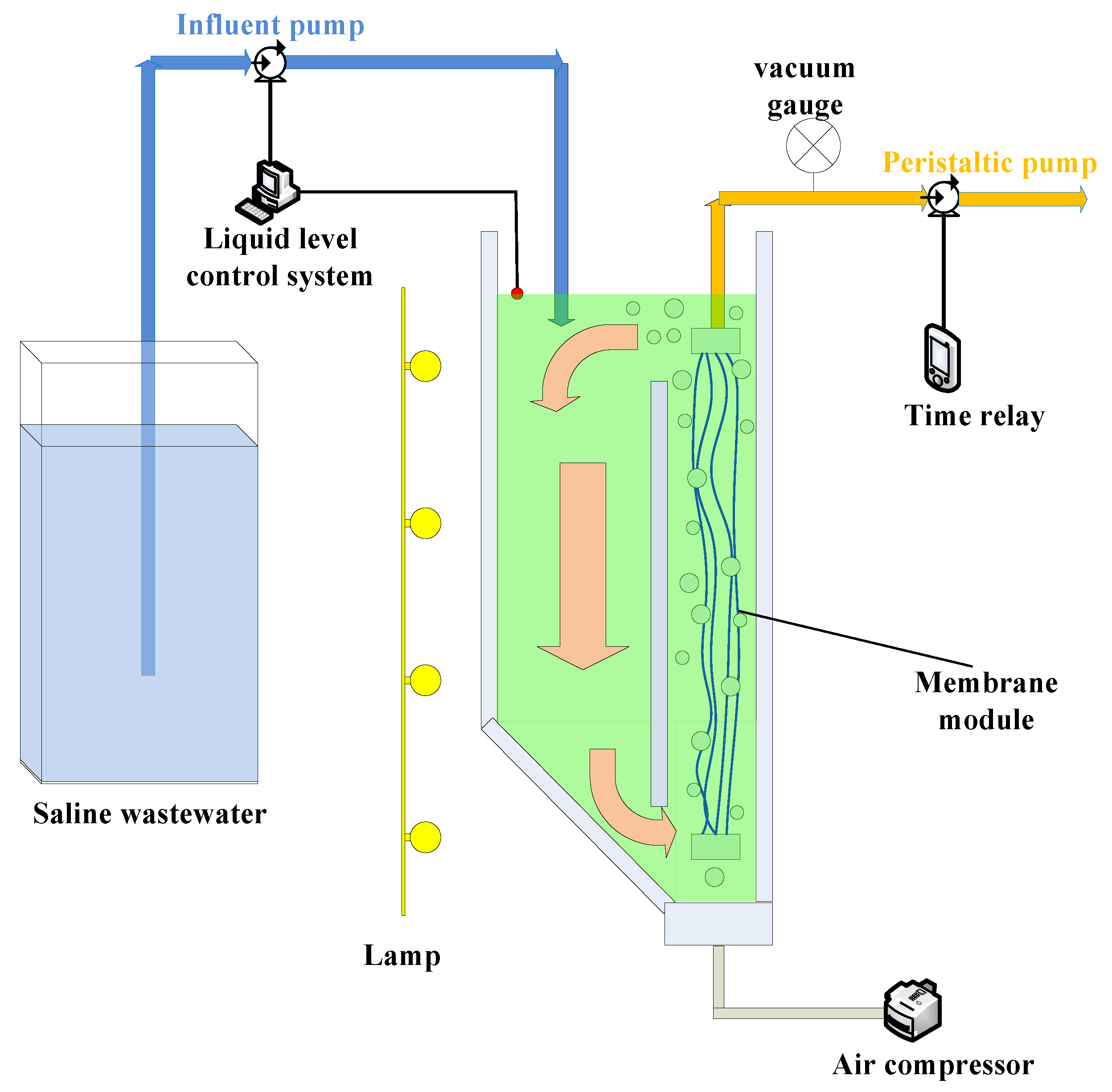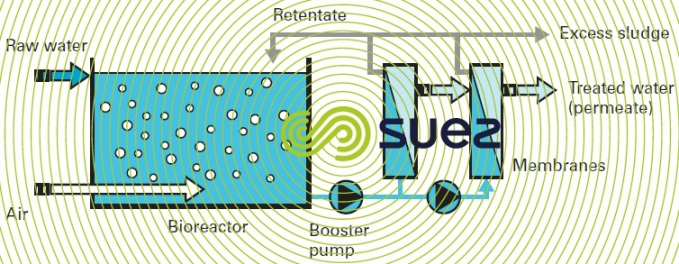Exploring the Environmental Impact of Membrane Bioreactor in Wastewater Treatment
Wiki Article
Understanding Membrane Bioreactors: The Future of Wastewater Treatment
Membrane layer bioreactors (MBRs) represent a significant technology in the field of wastewater therapy, integrating organic procedures with innovative membrane filtering to enhance effluent top quality. As global water scarcity and stringent governing structures come to be significantly pressing issues, MBR innovation provides a reliable reaction via its ability to decrease impact and maximize resource healing. The adoption of MBRs is not without its difficulties, which warrant cautious consideration. What are the essential aspects affecting their implementation and long-term feasibility in various contexts? The solutions might improve our technique to wastewater administration.What Are Membrane Layer Bioreactors?

The core elements of MBR systems include a bioreactor where microbial task occurs and a membrane unit that filters the mixed liquor. This dual functionality enables the simultaneous degradation of organic issue and solid-liquid splitting up in a solitary action. MBRs can operate in both submerged and outside setups, with submerged systems being much more common due to their compact design and operational efficiency.
The adoption of MBR technology has obtained grip in numerous applications, varying from local wastewater treatment to industrial effluent monitoring. MBRs are particularly advantageous in scenarios where room is strict or limited effluent quality criteria need to be satisfied. By maintaining a high focus of microorganisms within the bioreactor, MBRs enhance the destruction of natural pollutants, therefore generating higher treatment performances compared to traditional approaches.
Trick Benefits of MBR Modern Technology
The combination of organic treatment with membrane layer filtration in MBR systems supplies various benefits that set it in addition to traditional wastewater therapy approaches. One of the key benefits is the improved effluent top quality. MBRs efficiently get rid of suspended pathogens and solids, accomplishing higher degrees of filtration that meet rigid discharge standards and help with water reuse applications.
Another significant benefit is the lowered sludge production. MBR systems generate less excess sludge, bring about lower disposal costs and a reduction in ecological influence. The shut nature of the membrane system decreases the risk of odor discharges and improves general procedure control.
Last But Not Least, MBRs are versatile and adaptable, making them appropriate for different wastewater kinds, consisting of industrial and community sources. The capability to incorporate with innovative therapy modern technologies better enhances their effectiveness, making MBRs a promising solution for the future of wastewater management.
Challenges and Limitations of MBRs
While MBR technology provides many benefits, it additionally encounters a number of difficulties and restrictions that can affect its extensive adoption. One significant challenge is the high capital and functional prices related to MBR systems. The preliminary financial investment for membrane layer products and the needed facilities can be substantial, making it less accessible for smaller sized markets or municipalities.Additionally, membrane layer fouling stays a vital issue that can decrease system performance and rise upkeep demands. Fouling takes place when solids, natural matter, or microorganisms gather on the membrane layer surface, leading to lowered leaks in the structure and requiring constant cleansing or substitute.
Another constraint includes the complexity of the innovation. MBR systems require skilled workers for procedure and maintenance, which can be a barrier in areas with limited technological knowledge. Furthermore, the disposal of invested membranes a fantastic read offers environmental problems, helpful hints as the materials are often not naturally degradable and can contribute to lose management difficulties.
Finally, while MBRs can properly treat a large range of wastewater, they may not appropriate for all applications, particularly those with high concentrations of fats, oils, and oils, demanding further study and development to attend to these constraints.
Applications of Membrane Bioreactors
In different markets, membrane layer bioreactors (MBRs) have become a flexible remedy for wastewater therapy (Membrane Bioreactor). Their applications span community, commercial, and farming setups, showcasing their adaptability and performance in diverse environments. In community wastewater therapy plants, MBRs significantly enhance effluent high quality, enabling for water reuse and lowering the ecological influence of released wastewaterIndustrially, MBRs are employed in food and beverage processing, textile manufacturing, and pharmaceutical production, where they successfully deal with high-strength waste streams. Their ability to manage rising and fall lots and differing impurity focus makes them specifically useful in these sectors. In addition, MBRs help with the removal of pathogens, put on hold solids, and natural issue, adding to compliance with strict discharge policies.
In agriculture, MBRs are increasingly made use of for dealing with farming overflow and animals wastewater, allowing the healing of nutrients for fertilizer manufacturing. They likewise aid in the treatment of greywater for irrigation, advertising lasting water administration practices.
The versatility of MBRs is more confirmed by their integration with other modern technologies, such as anaerobic food digestion and advanced oxidation procedures, boosting general performance and source healing in wastewater treatment systems.
The Future of Wastewater Therapy
Improvements in technology and an expanding focus on sustainability are shaping the future of wastewater therapy. Membrane bioreactors (MBRs) exhibit this change by integrating organic treatment procedures with membrane purification, leading to premium effluent suitable for reuse. The fad towards round economic climates is motivating facilities to adopt MBRs for their capability to recover sources, such as water and nutrients, from wastewater.Innovations in membrane layer materials and setup are boosting the effectiveness and long life of MBR systems, decreasing functional costs and power intake. Smart innovation assimilation, including real-time tracking and automated control systems, is further enhancing efficiency and enabling anticipating upkeep, thus lessening downtime.
Moreover, social assumptions and regulatory stress are pressing industries and towns to adopt even more sustainable practices. Membrane Bioreactor. The shift towards decentralized wastewater therapy remedies is acquiring grip, permitting localized therapy that decreases transport prices and power use
Final Thought
Membrane layer bioreactors (MBRs) stand for a transformative strategy to wastewater therapy, integrating biological processes with sophisticated membrane layer modern technology. The benefits of MBRs, including improved effluent high quality, lowered spatial needs, and reduced sludge production, position them as a practical service amidst growing urbanization and stricter environmental guidelines. In spite of existing difficulties, the ongoing advancement over at this website in membrane layer products and functional methods assures to strengthen the efficiency and fostering of MBRs, guaranteeing their essential function in the future of sustainable wastewater administration.Membrane bioreactors (MBRs) represent a significant technology in the area of wastewater therapy, incorporating organic processes with sophisticated membrane filtration to enhance effluent top quality.Membrane layer bioreactors (MBRs) integrate biological treatment procedures with membrane layer filtering to efficiently treat wastewater.The assimilation of organic therapy with membrane layer filtering in MBR systems provides numerous benefits that establish it apart from conventional wastewater treatment approaches. Membrane layer bioreactors (MBRs) exemplify this change by integrating biological therapy processes with membrane purification, resulting in top notch effluent ideal for reuse.Membrane bioreactors (MBRs) represent a transformative approach to wastewater therapy, integrating organic processes with advanced membrane layer technology.
Report this wiki page